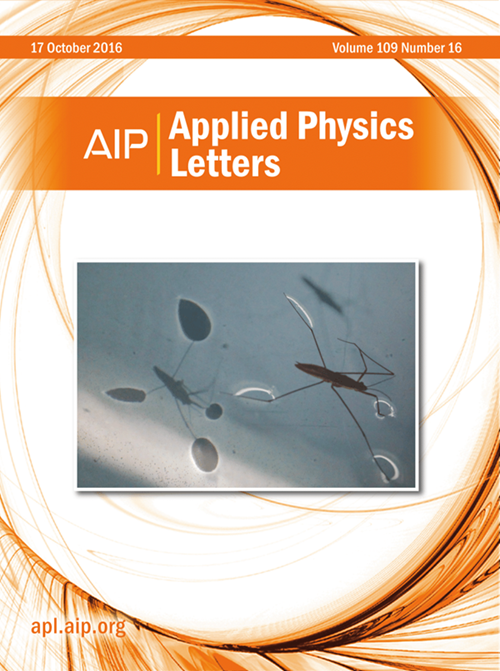Characteristics of transport properties in ultra-wide bandgap Al0.65Ga0.35N channel HEMTs with low contact resistance and high breakdown voltage (>2.5 kV)
IF 3.5
2区 物理与天体物理
Q2 PHYSICS, APPLIED
引用次数: 0
Abstract
Ultra-wide bandgap (UWBG) Al0.65Ga0.35N channel high electron mobility transistors (HEMTs) were deposited using a close-coupled showerhead metal-organic chemical vapor deposition reactor on AlN-on-sapphire templates to investigate the effect of transport properties of the two-dimensional electron gas (2DEG) on the epitaxial structure design. The impact of various scattering phenomena on AlGaN channel HEMTs was analyzed with respect to the channel, buffer, and AlN interlayer design, revealing that the alloy disorder and ionized impurity scattering mechanisms were predominant, limiting the mobility of 2DEG up to 180 cm2/Vs for a sheet charge density of 1.1 × 1013 cm−2. A surface roughness of <1 nm (2 μm × 2 μm atomic force microscopy scan) was achieved for the epitaxial structures demonstrating superior crystalline quality. The fabricated HEMT device showed state-of-the-art contact resistivity (ρc = 8.35 × 10−6 Ω · cm2), low leakage current (<10−6 A/mm), high ION/IOFF ratio (>105), a breakdown voltage of 2.55 kV, and a Baliga's figure of merit of 260 MW/cm2. This study demonstrates the optimization of the structural design of UWBG AlGaN channel HEMTs and its effect on transport properties to obtain state-of-the-art device performance.求助全文
约1分钟内获得全文
求助全文
来源期刊

Applied Physics Letters
物理-物理:应用
CiteScore
6.40
自引率
10.00%
发文量
1821
审稿时长
1.6 months
期刊介绍:
Applied Physics Letters (APL) features concise, up-to-date reports on significant new findings in applied physics. Emphasizing rapid dissemination of key data and new physical insights, APL offers prompt publication of new experimental and theoretical papers reporting applications of physics phenomena to all branches of science, engineering, and modern technology.
In addition to regular articles, the journal also publishes invited Fast Track, Perspectives, and in-depth Editorials which report on cutting-edge areas in applied physics.
APL Perspectives are forward-looking invited letters which highlight recent developments or discoveries. Emphasis is placed on very recent developments, potentially disruptive technologies, open questions and possible solutions. They also include a mini-roadmap detailing where the community should direct efforts in order for the phenomena to be viable for application and the challenges associated with meeting that performance threshold. Perspectives are characterized by personal viewpoints and opinions of recognized experts in the field.
Fast Track articles are invited original research articles that report results that are particularly novel and important or provide a significant advancement in an emerging field. Because of the urgency and scientific importance of the work, the peer review process is accelerated. If, during the review process, it becomes apparent that the paper does not meet the Fast Track criterion, it is returned to a normal track.
 求助内容:
求助内容: 应助结果提醒方式:
应助结果提醒方式:


